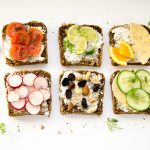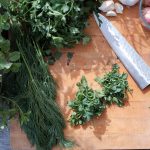Cooking with Confidence: Essential Techniques for Home Chefs
Recipes for Success
Creating memorable meals begins with mastering a few essential techniques and choosing the right recipes. This section highlights dishes that leave a lasting impression and meals that can be prepared in a snap.
Signature Dishes to Impress
Signature dishes are those recipes that stand out and exhibit the chef’s skills. These recipes often involve techniques such as perfecting sauces or cooking proteins accurately. For instance, a classic beef Wellington requires careful attention to temperature and timing, ensuring that the pastry is golden while the beef remains tender.
The sauce accompanying this dish plays a pivotal role, demanding reduction skills to achieve the right consistency and flavor balance.
Another impressive dish is coq au vin, which is rooted in traditional French cooking. This recipe involves braising chicken in red wine, with techniques focusing on flavor infusion and proper braising times. Learning these skills transforms simple ingredients into sophisticated meals, showcasing not only taste but presentation as well.
Quick and Easy Meals
Quick and easy meals require efficiency without compromising flavor. Techniques such as sautéing and grilling help achieve delicious results in minimal time. Stir-fry dishes are a prime example, where fresh vegetables and proteins are cooked at high heat, locking in flavors swiftly.
Similarly, pasta dishes like spaghetti aglio e olio rely on quick preparation and simple ingredients. The technique here involves infusing olive oil with garlic and chili flakes, tossing the pasta for even coating.
Grilled chicken or fish with a simple marinade can also be prepared rapidly, utilizing the technique of marinating to tenderize and flavor meats. These meals highlight the balance between practicality and flavor, perfect for those short on time yet eager for satisfying meals.
Advanced Cooking Techniques
The realm of advanced cooking techniques opens up a world where precision and creativity come together. This section focuses on molecular gastronomy and sous vide cooking, both involving scientific principles for culinary innovation.
Molecular Gastronomy
Molecular gastronomy combines science and artistry in the kitchen. Chefs use tools like liquid nitrogen and centrifuges to transform textures and flavors. Spherification, for instance, creates tiny, caviar-like beads bursting with intense flavors. Emulsification techniques are employed to craft foams and airs that enrich dishes with unique textural contrasts without adding weight.
Additionally, gels and thickeners like agar-agar allow chefs to manipulate viscosity, creating imaginative presentations. Understanding the reactions between ingredients at the molecular level is essential. This ensures culinary creativity without compromising flavor integrity. Molecular gastronomy encourages chefs to challenge traditional cooking boundaries, offering diners an unexpected experience.
Sous Vide Cooking
Sous vide cooking involves vacuum-sealing food in a bag and cooking it to precise temperatures in a water bath. This technique ensures uniform cooking while preserving flavor and moisture. By maintaining lower temperatures than conventional methods, proteins such as meat and fish achieve unparalleled tenderness.
Vegetables retain their vivid colors and nutrients due to minimal exposure to oxygen and heat. Consistency is key, allowing chefs to reproduce exact results every time. It requires the use of a reliable immersion circulator to maintain temperature accuracy. Sous vide’s precise control over cooking variables has revolutionized restaurant kitchens, offering home cooks an accessible way to achieve professional-quality results.



